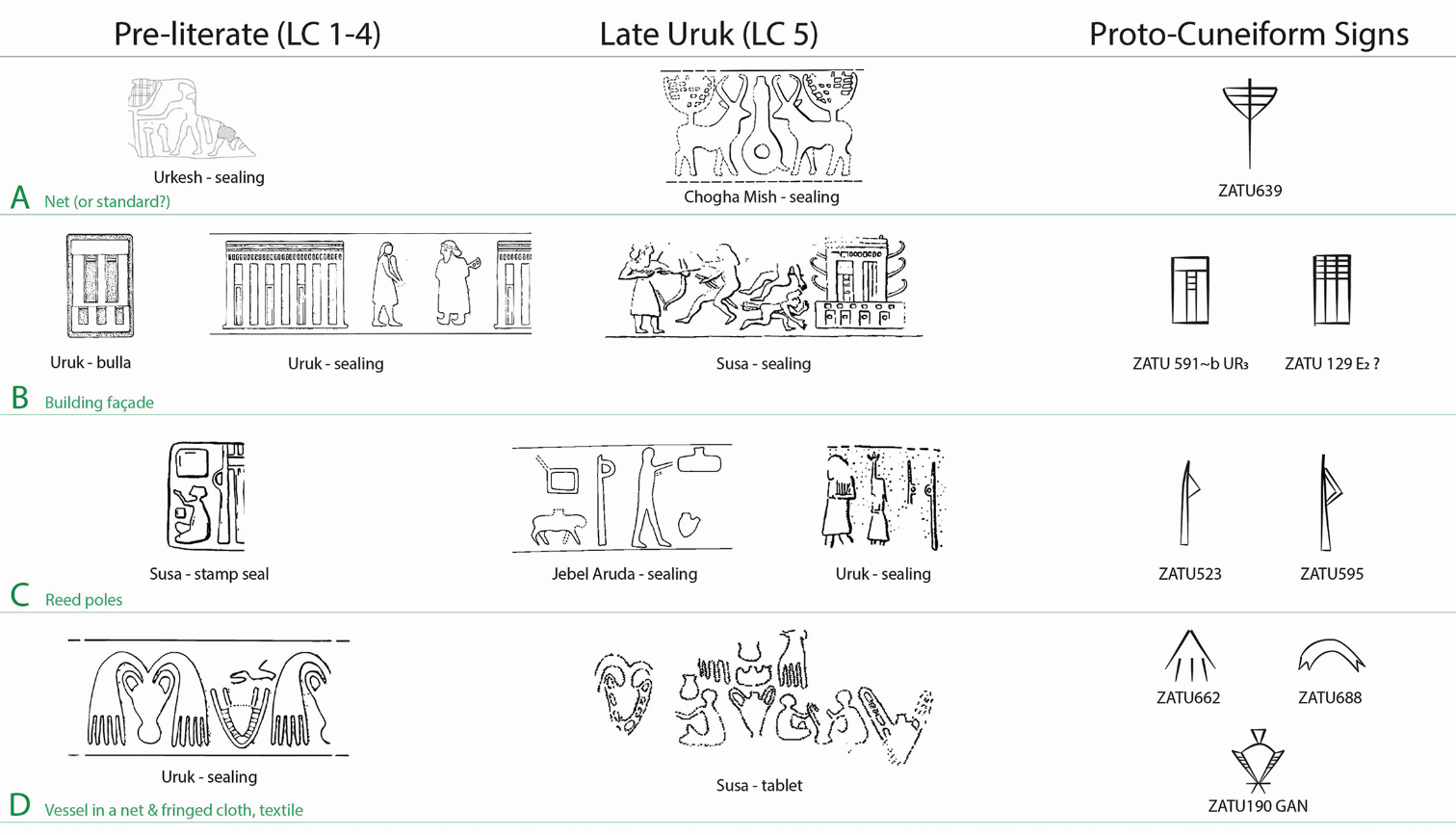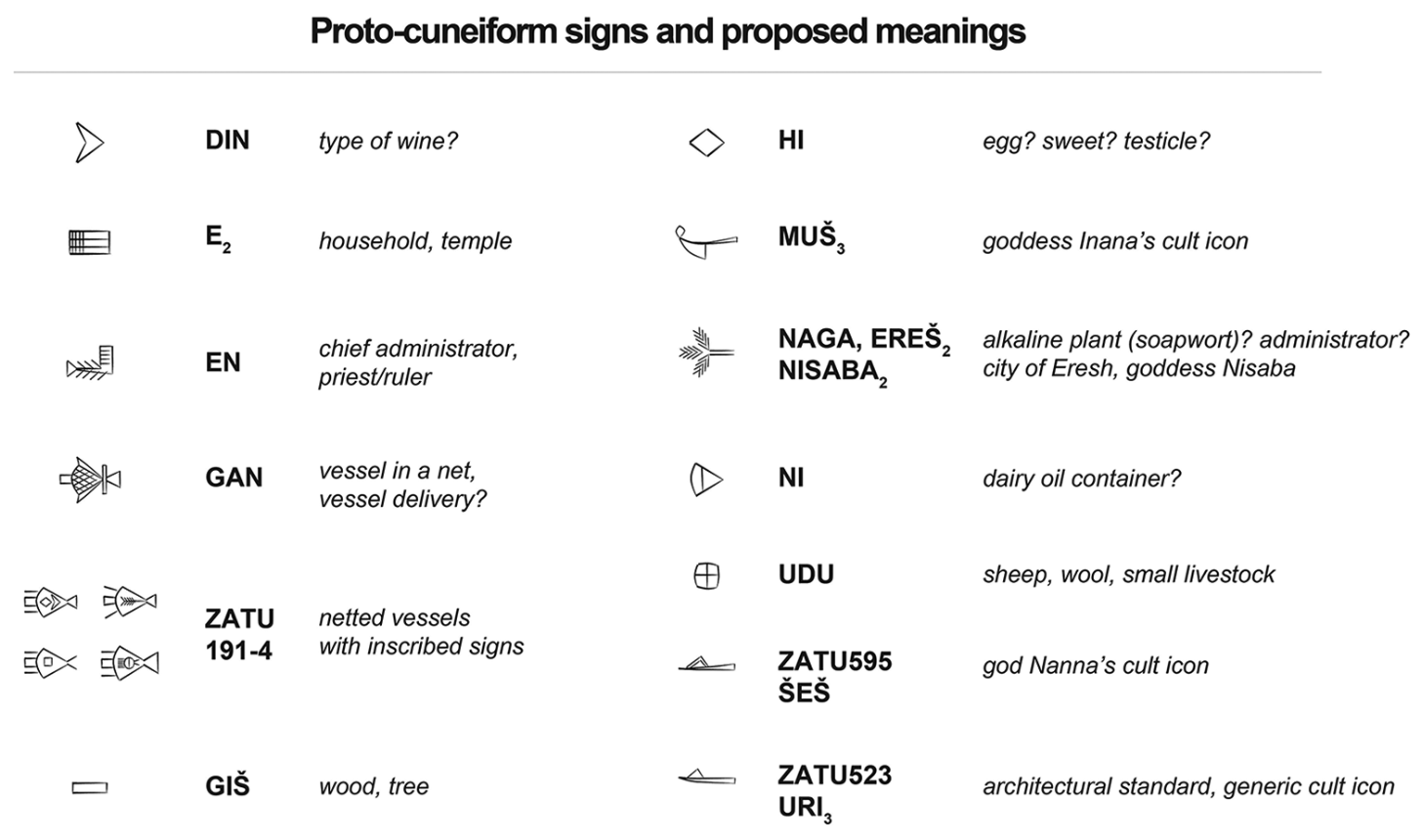When did humans start “putting pen to paper” and expressing their thoughts through a series of complex symbols? An important piece of the puzzle might have just been identified in the form of ancient artifacts from Mesopotamia.
An ancient city called Uruk emerged as one of the earliest sites of urbanization in Mesopotamia around 3500 BCE, exerting its influence across a vast portion of the Tigris-Euphrates river region from present-day Iran to Turkey. Among its many pioneering feats, the city was an important hub of culture, witnessing the development of an early predecessor of written language known today as proto-cuneiform script.
Before this, another system of symbols was used in the city. Pictographic signs were applied to clay tablets using an engraved cylinder seal that was rolled across the medium, leaving its imprint like an embossed rolling pin on soft dough.
Around 3500 BCE, cylinder seals were used to account for the production, storage, and transport of various consumer goods, such as food supplies and textiles – basically, an ancient form of accounting and record-keeping.
Researchers have previously identified hundreds of the pictographic signs used in proto-cuneiform, although more than half remain undeciphered to this day.
While it’s often been assumed that the cylinder seals gave rise to the invention of writing in this part of Asia, the exact nature of the relationship hasn’t been fully understood.

Diagrams of proto-cuneiform signs and their precursors from pre-literate seals.
Image credit: Courtesy of CDLI – Cuneiform Digital Library Initiative
In a new study, researchers at the University of Bologna in Italy believe they have come closer to explaining the gulf between the pictographic symbols of cylinder seals and proto-cuneiform. They systematically compared the illustrative designs on the cylinders to the proto-language and identified several direct links.
“We focused on seal imagery that originated before the invention of writing, while continuing to develop into the proto-literate period. This approach allowed us to identify a series of designs related to the transport of textiles and pottery, which later evolved into corresponding proto-cuneiform signs,” Kathryn Kelley and Mattia Cartolano, both researchers at the University of Bologna and co-authors of the study, said in a statement.
“Our findings demonstrate that the designs engraved on cylinder seals are directly connected to the development of proto-cuneiform in southern Iraq. They also show how the meaning originally associated with these designs was integrated into a writing system,” explained Silvia Ferrara, lead researcher and professor in the Department of Classical Philology and Italian Studies at the University of Bologna.

Possible meanings of the proto-cuneiform signs.
In sum, the symbols of the cylinder seal were a direct ancestor of proto-cuneiform signs, which then evolved into cuneiform, the oldest known form of written language.
By uncovering more of this relationship, the researchers believe they have illuminated part of the story behind a fundamental component of human culture; the transition from humble symbols used to track the trade of goods to written languages used to create religious texts and beautiful works of literature.
“The conceptual leap from pre-writing symbolism to writing is a significant development in human cognitive technologies. The invention of writing marks the transition between prehistory and history, and the findings of this study bridge this divide by illustrating how some late prehistoric images were incorporated into one of the earliest invented writing systems,” added Ferrara.
The study is published in the journal Antiquity.
Source Link: Origin Of Written Language Revealed In 5,500-Year-Old Mesopotamian Artifacts